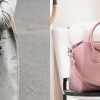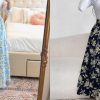Outfit Matching 101: How to Coordinate an Amazing Outfit
There’s something about a person who knows how to dress well. We all know them: they seem to put together a magazine-ready look for every season and occasion.
What’s their secret? Surely, some people just have an eye for fashion, and the rest of us are destined to wear khaki bottoms and a white button-down shirt forever.
But this isn’t true. Anyone can develop a fashion sense and put together knockout looks. Outfit matching is just like any other skill: you have to learn it and practice it.
If you are ready to learn how to create an outfit, read on!
What’s the Occasion?
The first thing to consider when styling an outfit is the occasion and season. You wouldn’t want to show up to a casual get-together in a power suit, or the important business meeting in formal-wear.
Learning about the different levels of dress for various occasions will go a long way in helping you narrow down your wardrobe choices and shopping trips.
The first tier is what we call casual. And it’s what it implies: everyday clothing that you’d wear out on a grocery trip or to get coffee with a friend.
Smart casual is a newer term in the fashion world. It’s an elevation of casual wear, usually including a few choice pieces that turn an everyday outfit into a statement. Smart casual is perfect for a weekend night out for dinner and a movie.
Business casual takes it one step further, usually taking the traditional business attire of slacks, skirts, and button-downs and giving them a little less formality with brighter colors or materials like cotton.
Business formal is what we all think of when we hear “executive” (suits and ties, usually in darker, muted colors).
Black tie raises the bar even further: elegant evening gowns and well-tailored dark suits with ties or bowties.
Knowing what occasion to dress for goes a long way in shaping your choices in the following sections.
Color
Color is the aspect of fashion where the biggest statements are made. Give an ordinary navy blue business suit a pop with yellow shoes, or dress up a casual outfit to smart casual with a muted jacket color. Both outfits will have you turning heads.
One of the biggest misconceptions about choosing colors for outfit matching is that they all have to match exactly. Imagine trying to match every single piece of your wardrobe: it’s practically impossible.
Instead, combine different colors to create harmony and contrast. When you’re building a wardrobe, start with neutral colors such as black, white, grey, dark blue, and brown. Buy your workhorse basics such as slacks and jackets in neutrals.
Monochromatic outfits are styled around different pieces of clothing that are different shades of the same color. A navy blue bottom with a light blue top, for example.
Contrast is a way to introduce a “pop” to your outfit. The easiest way to find a contrasting color for your outfit is to use an outfit color wheel and select a complementary color.
For example, if your jacket is navy blue and you would like your shirt underneath to contrast, chose a top somewhere in the yellow-red section of the color wheel for the best outfit matching.
Analogous colors can also make a very cohesive outfit. Using the navy blue jacket as an example, you could pair it with an olive green or heather grey top underneath.
And one last bit on color: the brighter the colors, the more casual they are perceived to be. Bright colors in a business formal outfit can make a statement but contain them to accessories such as shoes or a pocket square.
Patterns
Another consideration when outfit matching is patterns. These also vary in acceptability depending on the occasion. Polka dots at a formal event are generally frowned upon.
The general rule of thumb when using patterns is to limit them to once per outfit, at least while you are learning how to do outfit matching.
Advanced fashionistas may branch out into “power clashing” or using smaller subtle patterns against larger, more flashy ones.
Patterns are the most nebulous part of fashion: they go in and out of style faster than colors or clothing cuts. Focus on solid colors for your basics, and have fun with patterns on statement pieces such as blouses and accessories.
And when choosing patterns, make sure to also consult your color palette for the outfit. Matching patterns to outfit colors is the way to go.
Accessories
If you are new to outfit matching, the wide world of accessories may seem daunting. But accessories are where you can have the most fun with styling an outfit.
The first rule of accessory choosing is that leathers and metals should match. Avoid wearing, for example, a light leather belt with dark leather shoes, or a gold watch with silver rings.
Shoes and purse generally should complement each other. A matching patent leather pump and a bright red iphone 11 purse can make quite a statement against a black business formal suit.
Even if you don’t have shoes and a bag that matches perfectly, try not to overdo it on patterns for both; one can be solid and the other is a print that contains that solid.
Accessories such as these, and scarves and pocket squares (for the gentlemen) are where you can really go wild playing with colors, patterns, and textures.
Outfit Matching With Confidence
The biggest part of selling an outfit is wearing it with confidence. Once you have the basics of outfit matching down, feel free to experiment with bending and breaking the rules here and there.
If you master the basics and then go into planning every outfit with intention and purpose, even unconventional choices like power-clashing will turn heads and show that you know how to dress sharp.
For more fashion and lifestyle tips, contact us down below and follow us on social media!
Read Also:







